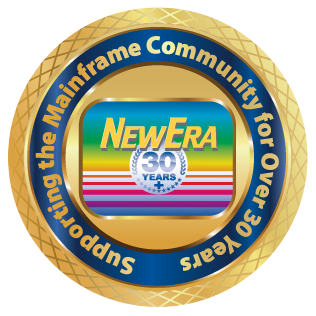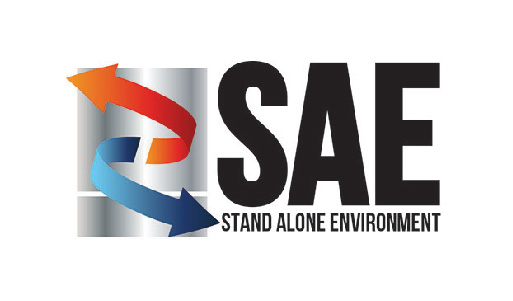
Sustainability in Business: Why it Matters to IT
IBM ESG experts weigh in on the environmental and financial impact of implementing sustainable IT solutions
By Neil Tardy
Sustainability in Business: Why it Matters to IT
IBM ESG experts weigh in on the environmental and financial impact of implementing sustainable IT solutions
By Neil Tardy
Earlier this year IBM announced that it had curbed its global energy use by 6.6% in 2023. The findings, which are detailed in the company's Impact report and summarized here, show that IBM increased its use of renewable resources while implementing IT equipment upgrades and energy efficiency projects in selected data centers. In coming years, the company intends to continue to work toward providing greater cooling efficiency across its dozens of data centers worldwide.
IBM's internal efforts in this area are nothing new. Over multiple generations, the company has prioritized efficient use of energy resources—a set of actions and outcomes now broadly described as "sustainability." However, there is a bigger picture when it comes to IBM's recent actions. Many organizations are struggling to implement sustainability initiatives and reach energy-savings targets, inaction that has not gone unnoticed by an increasingly skeptical public. This is underscored in findings recently released by IBM's Institute for Business Value (IBV). In a worldwide survey of some 5,000 global C-suite executives, the study concludes that while progress is being made, "turning ambitions into impact remains a challenge."

“By embedding sustainability across their business, organizations are better positioned to deliver both positive environmental impact and financial outcomes.”
—Oday Abbosh, global managing partner, Sustainability Services, IBM Consulting

Sustainability: The Way Forward
In a press release, Oday Abbosh, global managing partner, Sustainability Services, IBM Consulting, offered this assessment: "There is no quick fix... Sustainability needs to be part of day-to-day operations, not viewed only as a compliance task or reporting exercise. By embedding sustainability across their business, organizations are... better positioned to deliver both positive environmental impact and financial outcomes."
Indeed, IBM sees a way forward, one that benefits the business world as well as the world at large. In IBM's view, it is possible for corporate entities and organizations of all sizes and types and to realize business value while proactively dealing with the global challenges at present and into the foreseeable future.
This starts with careful planning and attention to detail—and naturally, technology plays a crucial role. Specifically, with the proliferation of hybrid cloud, along with the emergence of AI, the company believes the approach it's put in place in its own data centers can be readily emulated, as IBM's Dylan Boday, vice president, Technology Lifecycle Services (TLS) product management, explains.
Citing IDC research indicating that on-premises data centers typically operate at 20%–40% utilization and electricity while accounting for as much as 70% of total data center operation costs, Boday says that organizations have an opportunity to increase utilization across their IT environments, reduce energy costs and lower carbon emissions.
"The optimization of the data center is tightly linked to sustainability efforts," he says. "When enterprises refresh their data centers due to IT budget challenges and other factors, they can not only achieve cost savings, but also realize a host of additional benefits, including improved efficiency, greater security and meeting ESG goals and regulations—all of which provide a significant competitive advantage.

Modern z/OS Resilience
NewEra Software was founded with the specific goal of developing, marketing and supporting innovative mainframe system management tools and services. Thanks to the continued support of thousands of system programming professionals worldwide who have come to depend on NewEra, its products and support, the company has become an industry leader and set the standard for repair, data erasure, continuous backups and system resiliency. All of these ensure the ongoing integrity of critical Mainframe Systems worldwide.

Resilience monitoring ⮕
Inspectors report findings that could result in IPL failure

z/OS System Recovery ⮕
The standard for z/OS recovery from a failed IPL

Modern visualization ⮕
Web-based application to access and visualize z/OS resident data

Zero Trust architecture ⮕
Protect critical resources and establish a Zero Trust architecture
Register for a Webcast
Sustainability Is Good for Business
Research shows that the benefits of incorporating sustainability can outweigh the costs, and businesses that embed sustainability increase business value in several ways.


16% higher rate revenue growth


52% more likely to outperform peers on profitability
2
×
2X more likely to attribute great improvement in operating costs from sustainability efforts
Source: IBM
Organizations already recognize that cloud's management capabilities are well-suited to implementing sustainability initiatives. In another IBV study, around 40% of corporate decision-makers said they use cloud to deploy, track and manage their sustainability goals, both internally and for third parties.
"As businesses look to modernize and refresh their technology implementations, adopting more sustainable practices and solutions can help them achieve new outcomes," Boday adds. "From my perspective, this transformation starts in the data center."
AI Pushes Sustainability Efforts Forward
If the transformation starts in the data center, AI can be viewed as an engine that keeps things moving ahead. IBM's Kendra DeKeyrel, vice president, ESG & Asset Management product leader, sees AI playing a part in helping organizations make progress toward their sustainability initiatives.
"Data is what makes the sustainability journey possible, and AI will supercharge that journey, helping companies make better decisions, faster," she says. "There are many areas where organizations can apply data and AI for sustainability progress. For instance, companies may choose to leverage data insights to drive their sustainability strategy and reporting, build climate resilience and focus on advancing their transition to renewable energy sources. In addition, they can develop intelligent assets that require fewer utilities have a longer lifespan."
Looking ahead, DeKeyrel believes that the ongoing development of generative AI will cause sustainability initiatives to evolve.
"To prepare for the long-term adoption of AI, it's important for organizations to consider how they can leverage this technology in a sustainable way. This includes choosing where to locate processing, how to build and train AI models, and the choice of physical infrastructure to conduct inferencing," she says, noting that IBM offers foundation models that allow organizations to leverage AI without the need to conduct high-energy training from scratch. Down the road, IBM is exploring the future application of climate risk data, which is intended to inform organizations of potential climate-related risks to physical assets, DeKeyrel adds.
The Business Value of Sustainability
Despite the complex challenges, organizations recognize the business value of sustainability. More than 70% of IBV survey respondents say sustainability is central to their business strategy, while 75% say it drives better business results, and 72% view it as a revenue enabler rather than a cost center.
"Sustainability is not only good for the environment, it's good for business," DeKeyrel says. "Organizations know that sustainability matters, and that they can leverage technology to make the progress that we need."






IBM Sustainability Services and Solutions
IBM offers an array of cloud-oriented services and solutions to assist clients in their sustainability endeavors. For instance, in March, IBM Technology Lifecycle Services (TLS), which provides solutions, products and support for multi-vendor data center environments, unveiled this suite of sustainability-focused services.
Sustainability Optimization Assessment
Asset Recovery & Disposition
The IBM IT Sustainability Optimization Assessment
A remote service that provides recommendations to help clients optimize IT resources and performance and reduce energy consumption.
IBM Asset Recovery & Disposition
Currently available in the United States, Canada, U.K., Germany and Switzerland— IBM Asset Recovery & Disposition allows for the reselling or recycling of deinstalled IT assets. IBM will remove equipment and help prepare and assess the value of assets.
Sustainability Optimization Assessment
IBM Data Erasure Services
A collaborative effort with Blancco Software Technology, IBM Data Erasure Services allows for the removal of data from security-rich environments, across all types of drives and vendor technologies. Equipment can then be reutilized or placed in the circular economy.
On the software side, the IBM Envizi ESG suite captures and aggregates high-volume supplier product-level transactional and product carbon footprint (PCF) for the purpose of Scope 3 calculation and reporting. The capabilities of this Software as a Service (SaaS) offering can be particularly valuable in helping organizations deal with emerging regulations such as CSRD in the European Union and the SEC Climate Rules in the U.S.
In addition, Envizi can be used in tandem with the Maximo Application Suite. One of IBM's lifecycle management solutions, Maximo is a cloud-based platform that incorporates AI, Internet of Things (IoT) devices and analytics to extend asset lifecycles while reducing costs and operational downtime.